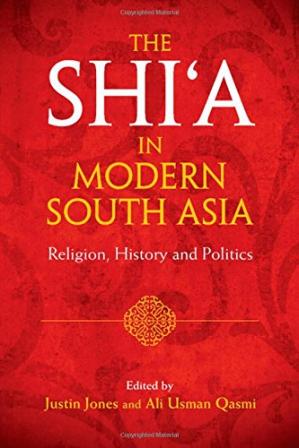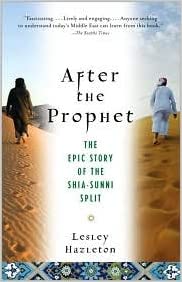
Red flags on the graves indicate the person was killed for being a Shia [Sana Batool/Al Jazeera]
Karachi, Pakistan – Miles from the hustle and bustle of the metropolis of Pakistan’s largest city, Karachi, lies the Wadi-e-Hussain graveyard with its hundreds of graves. Each is a window into a life that ended all too abruptly.
Protected from the city by large iron gates and tall walls, there is an uneasy calm within its walls where many of the city’s Shia Muslims have been laid to rest.
Pakistan is home to 220 million people, almost all of whom are Muslim. It is also home to one of the largest Shia populations in the world, as an estimated 20 percent of Muslims there are Shia.
At Wadi-e-Hussain red flags are planted by the graves of observant Shia Muslims who have died in targeted killings, gun or bomb attacks.
Since 2001, more than 2,600 Shia Muslims have been killed in violent attacks in the South Asian country, according to the South Asia Terrorism Portal research organisation. This year has seen an uptick in targeted killings against Shia accused of blasphemy.
In September, tens of thousands attended a demonstration in Karachi organised by the Ahle Sunnat Wal Jamaat (ASWJ), a Sunni hardline group that is banned under Pakistani law for its ties to the armed Lashkar-e-Jhangvi (LeJ) group, which has carried out many of the largest bombings and attacks on the community since 1996.
At Wadi-e-Hussain, people paying their respects come and go, as the caretaker customarily sprinkles water on the graves.
“Some bring flowers, some light candles on every Thursday, sometimes a brother or a mother comes with the book of prayer, spends time on the grave,” says the caretaker Laal Mohammad.
As the scent of rose petals and incense wafts across the graves this history of violence is writ large across the tombstones. A group of five graves marks a family killed in the Abbas town blast of 2013. A mother’s grave sits by her four-year-old’s son’s, killed in the same blast; the inscription says the woman dropped dead when she saw her young child’s lifeless body.
There are more than 300 graves belonging to the those dubbed as “martyrs” in Wadi-e-Hussain. These are their stories.
‘My brother did not come back’
A woman sits near a grave, reading verses from a prayer book, crying as she does so.
Tehseen Abidi’s younger brother was also killed in the 2013 bombing in Abbas Town, a popular majority-Shia Muslim neighbourhood in Karachi. Kashif Abbas Abidi was at the site of the blast when it went off. Police never found his body.

There are more than 300 graves belonging to the those dubbed as martyrs in Wadi-e-Hussain [Sana Batool/Al Jazeera]
For 40-year-old Tehseen, Kashif was her whole world. Sitting by his grave, she tells the story of the day she lost her brother in the attack, a sequence of bomb blasts which killed at least 45 people.
“He died in the first blast, he was present at the site of the blast, he promised me that he would come to see me in the evening, my brother did not come back” she says.
Abidi owned a general store in the neighbourhood and was at work when the bombs went off.
“It was March 3 and a Sunday,” said Tehseen. She only got a few sentences in before she broke down in tears, remembering her “little one”.
The government offered financial compensation to the families whose relatives had died that day and in other attacks. But the relatives say the money is of little comfort.
“The government gave 1.5 million rupees [about $14,300] to his wife, but our loss is so big that nothing can compensate for this loss,” said Tehseen.
“Even if our whole life we cry it’s not enough. Maybe if we all die crying in this anguish, maybe only then it will be compensated.”
‘Something died inside me that day’
On June 6, 1963 while preparing for a local ceremony, Ishtiaq Hussain and his fellow mourners heard the news of an attack on the procession in Thehri town, 14 kilometres (8.6 miles) out of Khairpur city in Sindh province. Hussain, now aged 80, is still haunted by his memories of that day.
It was a few days after Ashura, the 10th day of Muharram, the first month in the Islamic calendar. Ashura marks the anniversary of the Karbala mass killing and is commemorated by Shia Muslims in sombre rituals and processions.
“We were around 200 people who ran to save the congregation of Thehri that day,” he says. “We didn’t know that the news was a trap, and there were thousands of [attackers] waiting for us with axes and swords in their hands, to chop us all into pieces.”
Hussain made it out alive but he has no idea how.
“I was among the survivors, but I can’t recall how I survived. There were around 10 people who attacked me with the axes, they injured me badly, my neck and shoulder were bleeding, they kicked me in my stomach to the point that I started spitting blood,” he says.
“I still survived, but something died inside me that day.”
The attack at Thehri was one of the first significant sectarian attacks since Pakistan gained independence from the British in 1947.
More than 118 people were killed on that day. They were to be the first of thousands killed for being Shia.
Silencing the outcry
In August 2020, in the month of Muharram, a fresh wave of sectarian tension rippled across Karachi and the rest of the country. Shia scholars were accused of blasphemy after they gave sermons critical of Islam’s early caliphs. Thousands rallied in Karachi under the banner of the ASWJ, calling Pakistan’s Shia leaders infidels.
After the protests ended, many Pakistanis denounced the ASWJ supporters’ hate speech and said the government had not taken the demonstrators to task.
Journalist Bilal Farooqi was one of the few who spoke out publicly.
A Sunni, Farooqi was arrested in October 2020 on charges of having spread “religious hatred” and “anti-state sentiment”. He had tweeted criticisms of the ASWJ march and questioned the authorities over their allowing an organisation that had been designated as “terrorist” to organise the march.
“Most of my posts, on the basis of which [a police case] was filed against me, were about the ASWJ’s involvement in anti-Shia activities,” said Farooqi. Later released from police custody, he is still facing the same court charges.
He has called on Sunni Muslim activists to speak up against police inaction towards groups involved in Shia Muslim attacks.
Running parallel with the ASWJ’s continuing anti-Shia campaign has been the rise of a new far-right religious group in Pakistan, the Tehreek-e-Labbaik Pakistan (TLP), which has made the so-called issue of blasphemy a rallying point.
Since 2017, the TLP and its leading scholars have seen a sharp rise in support for the issue and have pressured the government to penalise those accused of blasphemy.
The movement and its leader Khadim Hussain Rizvi were behind days of protests in 2018 over one of Pakistan’s most high-profile blasphemy cases. It involved the acquittal of a Christian woman, Asia Bibi on blasphemy charges. The TLP also blocked the main highway leading to the capital Islamabad for weeks in 2017 over a change in an electoral oath. It was deemed by them as blasphemous because it eased some restrictions on members of the Ahmadi sect, an offshoot of Sunni Islam that believes in a subordinate prophet and has been declared non-Muslim under Pakistani law.
Farooqi says the TLP has also recently hit out at Shia Muslims for what they say is blasphemy against some of Prophet Muhammad’s companions.
Regional politics, local violence
Following the Islamic revolution in 1979 in Shia-majority Iran, which shares a border with Pakistan, there was an influx of Iranian and Shia Muslim influence into Pakistan, says Hasan Zafar Naqvi, a popular Pakistani Shia leader.
The real problem, he argues, emerged after the United States and Saudi Arabia – which is Sunni-majority and has long viewed Iran as its regional rival – began to look at Iran’s perceived influence in Pakistan as a threat to the region.
Pakistan’s ruler at the time, General Zia ul-Haq, had seized power in a military coup in 1977 and was in the process of establishing a more theocratic state. During Haq’s time in power until 1988, the role of religion in government affairs grew. It also became the basis for US-backed armed action by the ‘mujahideen’ in neighbouring Afghanistan.
Backed by Saudi Arabia, Sunni hardline groups began to counter the perceived threat of Shia in the region. To that purpose, a group called Sipah-e-Sahaba Pakistan (SSP, later to become the ASWJ) was formed in 1985 in central Pakistan.
Founded by Haq Nawaz Jhangvi, the party was against the mainly Shia Muslim landlords of the area and sought to exploit sectarian differences. It called for Shia Muslims to be declared non-Muslim under Pakistani law and organised frequent protests to highlight the issue. The rise of the SSP, and its allied LeJ in the 1990s, saw a sharp rise in incidents of violence against Shia Muslims across the country in the decades to follow, says Naqvi, the scholar.
Repeated attacks
In 2009, Syed Liaquat Hussain Zaidi, an influential Shia activist and leader in Karachi was gunned down by LeJ.
Zaidi’s murderer was arrested two years later and confessed to police that he was working for the LeJ and had been given a hit-list of influential Shia Muslims in the city to kill, according to Zaidi’s family.
Zaidi was actively involved in charity and welfare work and was the president of Pasban-e-Aza, a Shia welfare organisation, said his sister Rehana Zaidi.
On a winter morning in November, Zaidi took his young son to school but never returned, says Rehana.
Two motorcyclists shot him three times in the head as he stopped at a traffic signal in the city. His niece first reached the scene and found her uncle in a pool of blood, the car surrounded by onlookers. No one attempted to help him, she says.
A year after the murder, Zaidi’s killers returned – this time shooting Zaidi’s nephew, Rameez Hussain, mere blocks away from the family home.
Miraculously, the nephew survived. The murderer, in his confession, told police he had fled the scene having assumed Hussain had been killed. “God saved him,” says Rehana.






